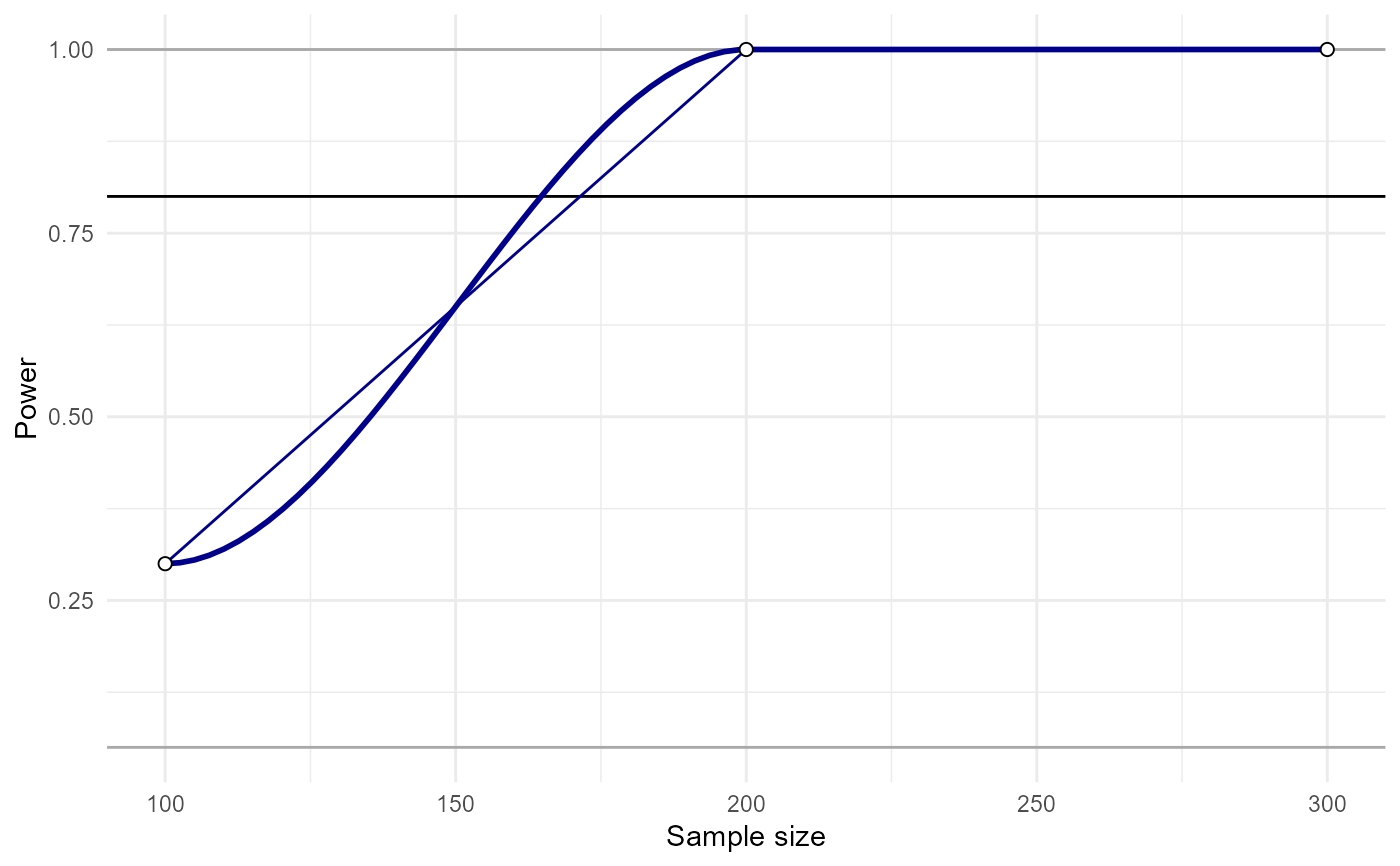Plot the output of power_interaction().
Arguments
- power_data
Data frame of results from power_interaction(). Can accept the raw results if up to 3 parameters were varied during simulation. Any more and data should be filtered first.
- x
Optional, the x-axis of the plot. Default is the first variable after 'pwr'.
- group
Optional, grouping variable for the line color. Default is the second variable after 'pwr', if present.
- facets
Optional, grouping variable for plot facets. Default is the third variable after 'pwr' if present.
- power_target
The target power. Default is 80%.
Examples
power_analysis <- power_interaction(n.iter = 10,N = seq(100,300,by=100),
r.x1.y = 0,r.x2.y = .1,r.x1x2.y = -.2,r.x1.x2 = .3,detailed_results = TRUE)
#> Performing 30 simulations
#>
#> Attaching package: 'MASS'
#> The following object is masked from 'package:dplyr':
#>
#> select
plot_power_curve(power_analysis)
#> Warning: span too small. fewer data values than degrees of freedom.
#> Warning: pseudoinverse used at 99
#> Warning: neighborhood radius 101
#> Warning: reciprocal condition number 0
#> Warning: There are other near singularities as well. 10201
#> Warning: span too small. fewer data values than degrees of freedom.
#> Warning: pseudoinverse used at 99
#> Warning: neighborhood radius 101
#> Warning: reciprocal condition number 0
#> Warning: There are other near singularities as well. 10201
#> Warning: no non-missing arguments to max; returning -Inf

